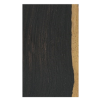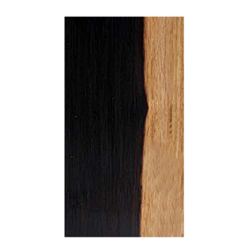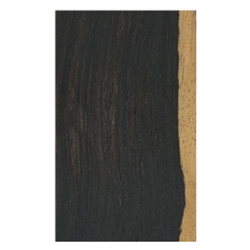African Blackwood

Family: Fabaceae - Order: Fabales - Class: Magnoliopsida
Scientific
name: Dalbergia melanoxylon
Trade name: African Blackwood / Grenadille Afrique
Also known as African grenadillo (United Kingdom); Mpingo
(Tanzania); Grenadilla (Mozambique); Pau-Preto (Mozambique); Ebene du
Mozambique (France); Afrikanisches grenadille (Germany)
Origin: East and Central Africa, from
Sudan to Mozambique, to Angola and Senegal.
Instrumental
uses:
Guitar back and sides, fingerboards, bridges, head plates, bindings, peg heads,
turnery, woodwind and stringed instrument parts.
Tonal
properties:
African blackwood is the
densest of rosewoods, the taptone is glassy and loud – Deep bass and
well-defined trebles. Great volume and clarity of sound, with good note
separation. So good and expensive as well as heavy. It has all the same great
rosewood acoustic properties but with higher volume and amazing separation of
voices. Tonally some luthiers refer that it is as good as a great Brazilian
rosewood set when matched with the right top, it has that nice quick bottom and
great harmonic blanket that Brazilian lends to the final complexity, a powerful
and robust sound.
This is one the finest sets, almost black with very dark slight reddish
purplish waves, it will produce master guitar. Contains some resins or extracts
which could pose problems when machining or finishing.
It is a very dense, hard and stiff wood, actually the 3rd densest on the planet
with an average dried weight of 79 lbs/ft3 - 1270 (kg/m3).
African
Blackwood is a true rosewood. Dalbergia melanoxylon occurs on a wide
variety of sites from sea level to 1,050 m of altitude. The tree is much
branched, usually multi-stemmed and small, 5 to 8 m in height, sometimes as
much as 16 m. The bole is short, cylindrical, often fluted and rarely over 30
cm in diameter.
The sapwood is yellowish
white. The heartwood is dark purple-brown with black streaks, it is sharply
demarcated.
CITES Status
- Protected on the CITES Appendix II and on the IUCN Red List reported as near threatened.
Gallery Photos




